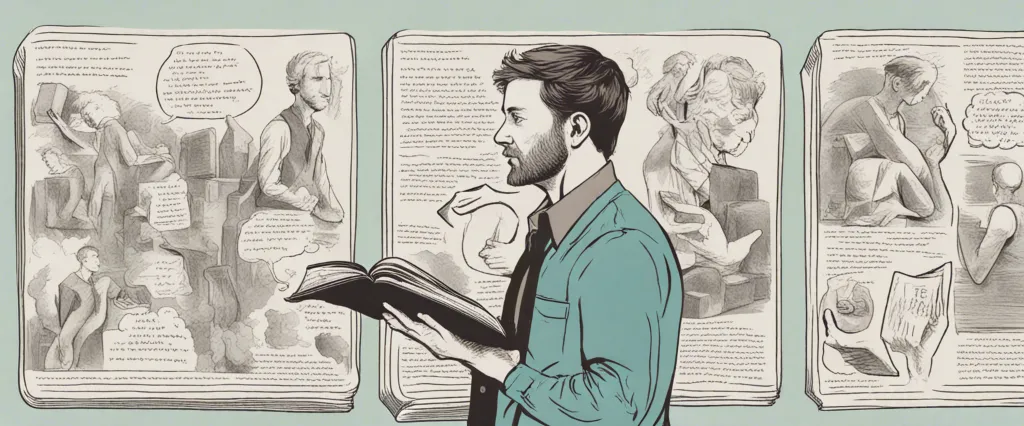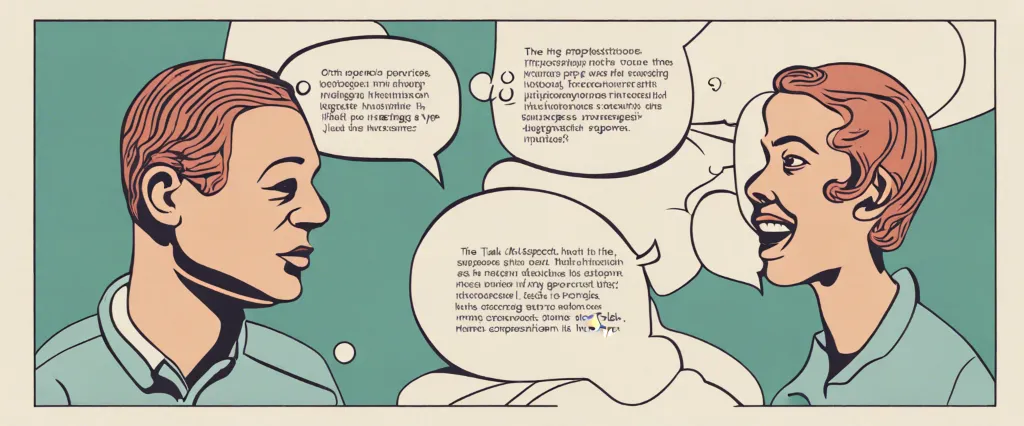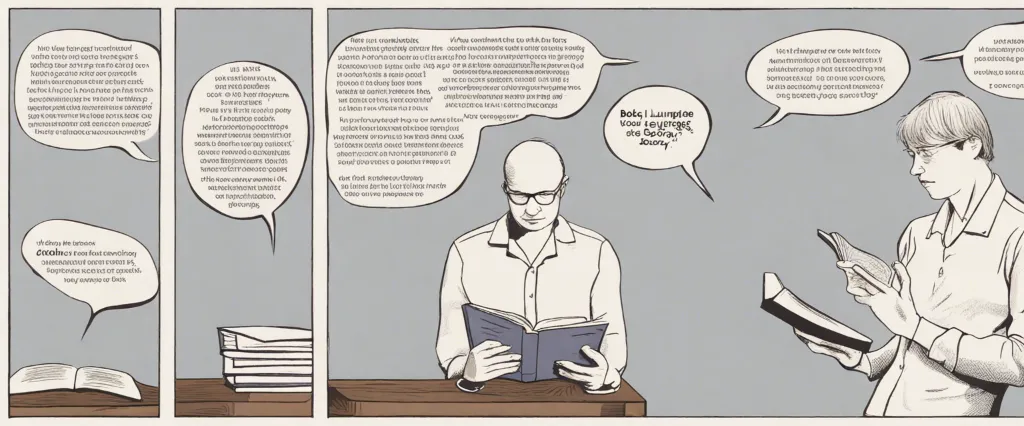
In the realm of human interaction and self-discovery, understanding the intricacies of personality and nonverbal communication has always been a fascinating endeavor. Two remarkable books, The Definitive Book of Body Language by Allan Pease and Type Talk by Otto Kroeger, delve deep into these domains, offering unique perspectives on deciphering human behavior and decoding the complexities of personality types. While both texts share a common goal – assisting readers in deciphering the unspoken nuances of human interaction – they adopt distinctive approaches, employing diverse frameworks to shed light on these intriguing aspects of human nature. As we embark on this comparative study, we will navigate through the depths of body language, exploring its intricate relationship with personality and communication, as illuminated by Pease, while simultaneously investigating the fascinating world of psychological types, as revealed by Kroeger. By analyzing the strengths, weaknesses, and underlying concepts of each book, we aim to gain a comprehensive understanding of these two invaluable resources and discern the distinctive insights they bring to our understanding of human behavior.
Brief Summary of Two Books
The Definitive Book of Body Language by Allan Pease
The Definitive Book of Body Language by Allan Pease is a comprehensive guide that explores the importance of non-verbal communication and how it affects our interactions with others. The book delves into various aspects of body language, including facial expressions, gestures, postures, and vocal tones, to provide readers with valuable insights into decoding hidden messages.
Pease, a renowned body language expert, draws on scientific research, personal anecdotes, and real-life examples to explain the significance of different gestures and expressions in different cultures. He emphasizes the universality of certain body language signals, explaining how they transcend borders and language barriers.
Throughout the book, Pease highlights the role of body language in various aspects of life, such as dating, business negotiations, interviews, and public speaking. He offers practical tips and techniques to help readers interpret body language accurately and use it effectively to their advantage.
Additionally, the author delves into the gender differences in body language, delving into how men and women often communicate non-verbally in distinct ways. Pease also explores body language in relationships, shedding light on how couples can better understand and connect with each other through non-verbal cues.
With its engaging writing style and informative content, The Definitive Book of Body Language provides readers with a comprehensive understanding of body language and equips them with the tools to enhance their communication skills and build better relationships.
Type Talk by Otto Kroeger
“Type Talk: The 16 Personality Types That Determine How We Live, Love, and Work” by Otto Kroeger is a comprehensive exploration of Myers-Briggs Type Indicator (MBTI) personality types and how they shape our interactions, relationships, and behaviors in various aspects of life.
The book begins by introducing the four dimensions that determine MBTI personality types: extraversion-introversion, sensing-intuition, thinking-feeling, and judging-perceiving. Kroeger explains how these dimensions interact with each other to form the 16 different personality types.
The author then delves into each of the 16 types, providing detailed descriptions and analysis of their characteristics, strengths, weaknesses, and typical behaviors. Kroeger illustrates these traits through real-life examples and anecdotes, helping readers to understand how their own type influences their choices and actions.
Additionally, Kroeger explores how different types interact with each other in various social and professional contexts. He provides insights into how people with different personality types communicate, make decisions, handle conflict, and approach work assignments. The book also offers practical advice on how to leverage these differences to enhance teamwork and collaboration in both personal and professional settings.
Throughout the book, Kroeger emphasizes the importance of understanding one’s own type and recognizing the differences in others. By doing so, individuals can cultivate empathy, improve communication, and build stronger relationships. He further explores how each type functions under stress and offers strategies for managing and coping with the unique challenges they may face.
In summary, “Type Talk” is a valuable resource for anyone interested in understanding personality types and the impact they have on our lives. Kroeger’s insights and practical guidance empower readers to embrace their unique qualities and navigate interpersonal dynamics more effectively.
Comparison between Two Books

Similarities in Relationship & Communication
The Definitive Book of Body Language by Allan Pease and Type Talk by Otto Kroeger are both insightful works that explore the dynamics of relationships and communication. Despite focusing on different aspects of communication, they share several similarities in terms of their perspectives and insights.
1. Non-verbal communication: Both books emphasize the importance of non-verbal cues in effective communication. Pease in The Definitive Book of Body Language extensively explores the significance of body language, facial expressions, and gestures. Kroeger in Type Talk delves into the non-verbal signals that individuals of different personality types often exhibit. Both authors stress that understanding and interpreting non-verbal cues can greatly enhance communication between individuals.
2. Clarity and understanding: Relationship and communication are depicted as being closely intertwined in both books. Pease and Kroeger highlight the importance of clarity and understanding in fostering healthy relationships. Pease suggests that being observant of other people’s non-verbal cues can help decipher their true intentions and feelings, allowing for more effective communication. Kroeger focuses on individuals’ different personality types and how understanding these differences can lead to clearer and more meaningful interactions.
3. Conflict resolution: Both books offer insights on resolving conflicts through improved communication. Pease explains how body language can reveal underlying tensions and unspoken thoughts, enabling individuals to address conflict more effectively. Similarly, Kroeger explores how understanding different personality types can prevent conflicts from escalating, as individuals can adapt their communication style to bridge gaps and find common ground.
4. Impact of self-awareness: Both authors highlight the significance of self-awareness in relationship and communication dynamics. Pease suggests that understanding one’s own body language and non-verbal cues can help project intentions more accurately. Kroeger argues that individuals who are aware of their personality type can modify their communication patterns to better connect with others.
5. Contextual considerations: Both books emphasize the importance of considering the context in which communication takes place. Pease advises readers to be mindful of cultural and situational factors that influence non-verbal communication. Similarly, Kroeger cautions against making assumptions about someone’s personality type solely based on observable behaviors, underscoring the need for context in understanding individuals.
In summary, The Definitive Book of Body Language by Allan Pease and Type Talk by Otto Kroeger provide valuable insights into relationship and communication dynamics. They both emphasize the significance of non-verbal cues, clarity, conflict resolution, self-awareness, and contextual understanding to enhance communication effectiveness and foster healthy relationships.
Divergences in Relationship & Communication
Both The Definitive Book of Body Language by Allan Pease and Type Talk by Otto Kroeger explore the various nuances of human behavior and offer insights into how these behaviors impact relationships and communication. However, there are notable divergences in how the two books approach these topics.
In The Definitive Book of Body Language, Allan Pease focuses primarily on non-verbal cues and gestures to decipher people’s true intentions and emotions. He delves into the significance of body language in various contexts, such as dating, workplace, and social interactions. Pease highlights the importance of understanding and interpreting body language accurately for effective communication.
On the other hand, Type Talk by Otto Kroeger approaches relationship and communication through the lens of Myers-Briggs Type Indicator (MBTI) theory. The book discusses how personality types influence the way individuals communicate, make decisions, and interact with others. Kroeger explores the sixteen different personality types identified by MBTI and offers guidance on how people can better understand and appreciate these varying communication styles.
While both books offer valuable insights, they diverge in their emphasis on different aspects of communication and relationship dynamics. The Definitive Book of Body Language places more focus on non-verbal cues, emphasizing the importance of understanding visual and physical cues to accurately interpret a person’s thoughts and feelings. In contrast, Type Talk centers around personality types and the impact these have on communication and relationships.
Another notable divergence is the level of scientific backing present in the two books. The Definitive Book of Body Language draws heavily on scientific research and studies to support its claims, providing a more evidence-based approach to understanding non-verbal communication. Type Talk, on the other hand, relies more on anecdotal evidence and case studies to illustrate the impact of personality types on communication styles.
In conclusion, while both The Definitive Book of Body Language by Allan Pease and Type Talk by Otto Kroeger offer valuable insights into relationship dynamics and communication, they diverge in their approach. Pease’s book emphasizes the significance of non-verbal cues and gestures in understanding human behavior, whereas Kroeger’s book looks at communication styles through the lens of personality types.

Conclusion
Both “The Definitive Book of Body Language” by Allan Pease and “Type Talk” by Otto Kroeger are highly regarded books in their respective fields. Ultimately, the choice of which book is more worthy of reading depends on your personal interests and goals.
“The Definitive Book of Body Language” explores the nuances of nonverbal communication and helps readers understand the hidden messages conveyed through body language. It covers various aspects of body language, such as facial expressions, gestures, and posture, providing practical insights that can be applied in daily life, personal relationships, and professional settings. This book is highly recommended for individuals interested in improving their communication skills and understanding the psychology behind nonverbal cues.
On the other hand, “Type Talk” focuses on Myers-Briggs Type Indicator (MBTI) personality types. It delves into the different ways people perceive and interact with the world based on their personality preferences. “Type Talk” provides an in-depth analysis of the sixteen personality types, offering valuable insights into individual strengths, communication styles, and preferred work environments. This book is particularly beneficial for individuals interested in psychology, self-discovery, and enhancing their interpersonal relationships.
Ultimately, both books offer valuable knowledge and can be worth reading depending on your specific interests and goals. If you are more interested in understanding nonverbal communication and body language, “The Definitive Book of Body Language” would be a great choice. However, if you are more intrigued by personality types and the MBTI framework, “Type Talk” would be the more appropriate option.


